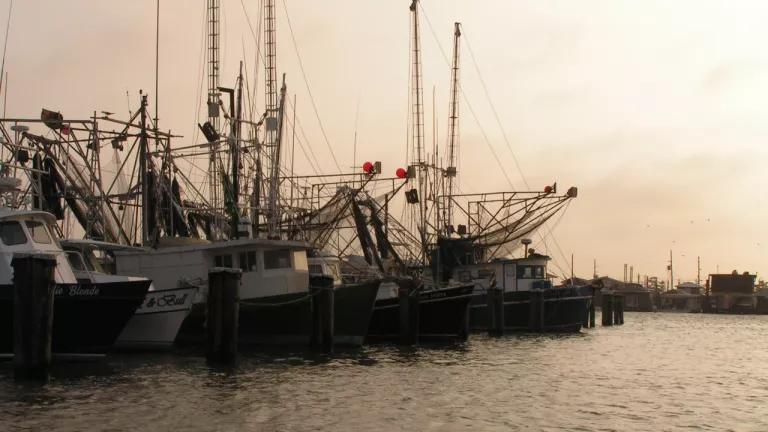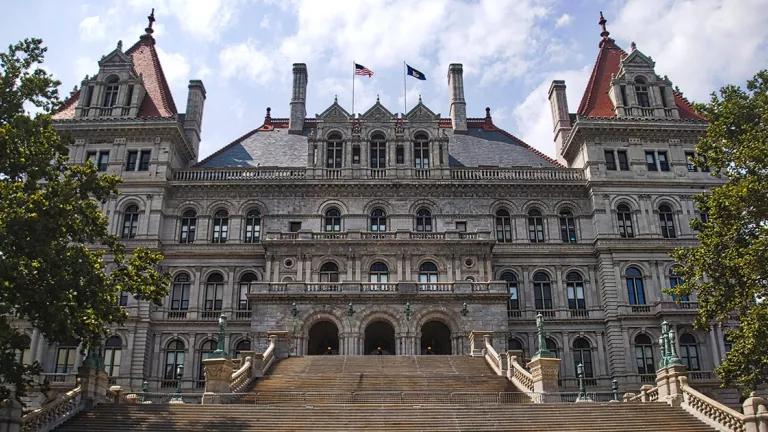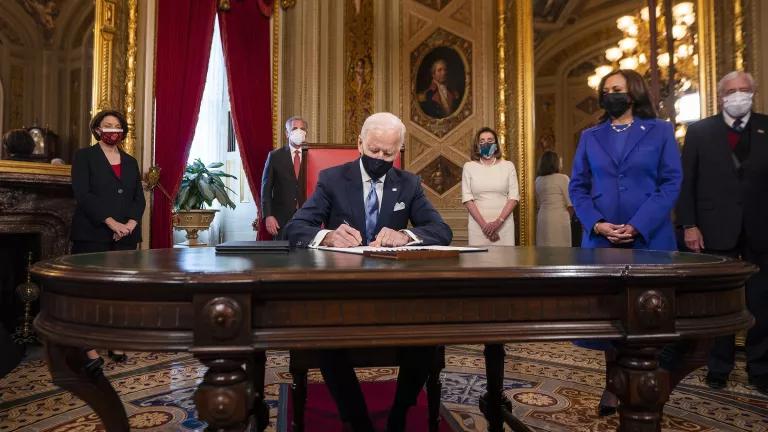2019: A Banner Year for the Environment in NYS
NRDC and our regional partners secured a broad array of environmental victories—from a statewide ban on plastic bags in grocery and retail stores to a far-reaching food waste recycling law to the most ambitious state climate law in the nation.
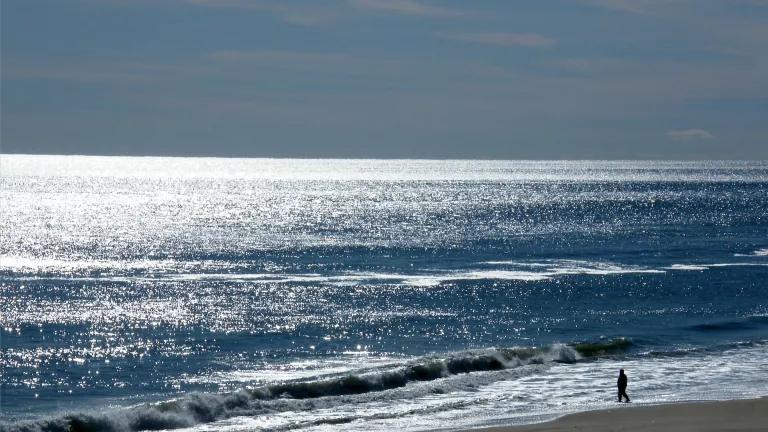
This past year has been an historic legislative session for environmental policies in New York State. NRDC and our regional partners secured a broad array of environmental victories—from a statewide ban on plastic bags in grocery and retail stores to a far-reaching food waste recycling law to the most ambitious state climate law in the nation. Many of these 2019 wins are a result of decade-long campaigns, strong coalitions and relationship-building. And of course, the new Senate majority helped achieved the most progressive environmental bills in New York history.
Top NRDC environmental victories
In New York’s legislative calendar, the first step, from January to April 1st, is the creation and passage of the state budget. During that period, among numerous successful bills, were two major wins for our ocean. First, New York passed a prohibition on offshore oil and gas drilling off the state’s coastline, including pipeline permits and state leases that could support oil and gas development, and oil tankers from unloading petroleum products in our ports. Second, the state prohibited the use of purse seine fishing nets—industrial-size nets often used when fishing for menhaden, a key food source for many aquatic species—which will prevent overfishing, protect larger marine mammals off our coast, and maintain New York’s economically vital commercial fisheries.
On waste issues, the state budget also included two big victories. A landmark food waste recycling bill was passed, which requires large generators of food waste to separate out wholesome food for donation to food recovery organizations and recycle food scraps at compost facilities and anaerobic digesters. In a state where 1 out of 8 citizens lacks consistent access to sufficient food, this is a major policy achievement. In addition, the state passed a ban on the use of single-use plastic bags in grocery stores, convenience stores and retail outlets. The law will allow counties and cities to enact a nickel fee on paper bags, since paper bags pose their own set of adverse environmental impacts. The funds collected will be split between localities, which must use them to purchase reusable bags for their residents, and the State, which is required to deposit the monies it receives into the Environmental Protection Fund.
Speaking of which, the Environmental Protection Fund was maintained at its historic funding level of $300 million for the fourth year in a row. The Fund supports projects tackling climate change, conserving open space, parks, solid waste, and the new Environmental Justice Community Impact Grants—meant to help New York communities that are disproportionately impacted by pollution.
In a win for renewable energy, also as part of the 2019 budget package, the New York Power Authority (NYPA) is now permitted to build and own offshore wind transmission for the purpose of providing that wind power to New York residents. Under the new law, NYPA will also be able to install and operate electric vehicle charging stations, as long as these facilities are used by the public. NYPA can now supply power procured from competitive market sources to any existing customer and can extend loans or grants to customers to invest in renewable energy systems. Engaging NYPA is vital for the state to hit necessary targets over the next 30 years, especially now in the context of the climate change bill likely to be signed into law by Governor Cuomo.
And perhaps most notably—and with the backing of strong leadership in Albany, coupled with successful campaigning by a broad range of environmental, transit, labor, business and civic advocates—the final budget included the creation of the nation’s first comprehensive congestion pricing system. The plan will help New York move beyond the decaying public transit systems of the past and tackle New York City’s traffic woes, along with the harmful emissions that come with it.
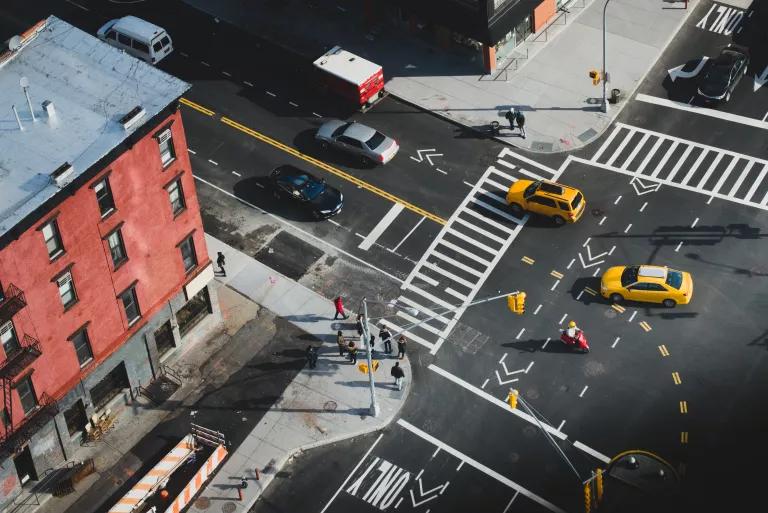
The rest of the legislative session included additional wins for our environment that are poised to be sent to Governor Cuomo for signature.
Two bills regarding toxics regulation were passed. The first addresses the use of per- and polyfluoroalkyl substances (PFAS)—a group of chemicals that have been widely used in consumer and industrial products since the 1940s and are associated with serious health effects such as cancer—in firefighting foam. Once signed, the bill will immediately ban the use of PFAS in firefighting foam for trainings and prohibit the sale of PFAS-containing foam for use in New York state beginning two years after enactment, except for use in oil- and chemical-based fires. And another bill, the Child Safe Products Act, aims to protect children’s health by authorizing the Department of Environmental Conservation to designate dangerous chemicals and chemicals of concern and creating restrictions on the use of harmful chemicals in children’s products, such as toys, clothes and bedding.
New York state also addressed wildlife trafficking in a bill requiring the Department of Environmental Conservation to designate certain species as vulnerable species, specifically requiring the Department to designate the giraffe as a vulnerable species, and banning the sale of all parts of those vulnerable species in the state, such as giraffe bone carvings.
And finally, at an event with former Vice President Al Gore, Governor Cuomo today announced he will sign into law the New York Climate Leadership and Community Protection Act—groundbreaking legislation that will set the state on a path to net zero and is the most ambitious state climate law in the nation. This progressive legislation aims to reach 100% clean energy by 2040, a net carbon emissions reduction of 85% from 1990 levels by 2050, and creates a Climate Action Council, responsible for creating a scoping plan with recommendations for emissions reductions across all sectors. Importantly, it also includes environmental justice provisions, setting a target for disadvantaged communities to receive 40% of the overall benefits from the state’s climate programs, and at a minimum, receive no less than 35% of those benefits.
All of these historic victories are not only a testament to the long, hard work of the environmental community, but also progressive legislators who have shown the courage to champion these policies and values in the face of sustained opposition by the fossil fuel and chemical industries. New Yorkers have a lot to be proud of by standing up for historically marginalized communities, clean air and water, protecting open space, and transitioning to a clean energy future.


